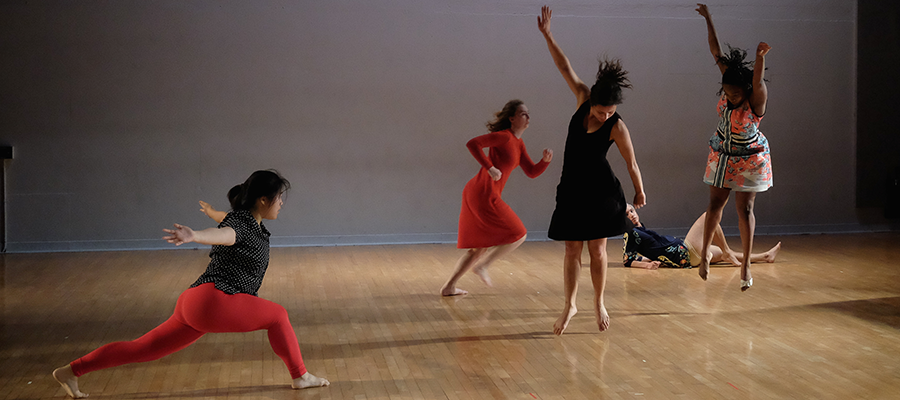Collaborative Teaching Model Provides Transformative Education

October 20, 2017
Since the fall of 2015, Arts Alive SDSU has expanded the opportunities for non-arts majors to experience and be a part of the arts on campus through collaborative courses.
In the collaborative courses model, two or three faculty members from different disciplines work together to redesign their respective courses with collaborative interdisciplinary input, recognizing the benefit of the multiple learning outcomes from the disciplines involved.
The courses are offered at the same time, on the same day, and are each assigned their own space in which to meet, allowing faculty to decide how often the students from each of the courses meet together.
Previous Arts Alive SDSU collaborative courses have included classes that combine students in biology and graphic design, theatre and communications, and English and music.
Teaching Dance and Polymer Science Collaboratively
In the spring of 2018, students will work jointly to investigate the relationship between science and movement through a collaborative pairing of physics and dance courses. The semester will culminate with a presentation on their research about polymer science and a piece of choreography based on it, which will be performed in front of a broad audience.
Arlette Baljon, Assistant Professor in Physics, and Joseph Alter, Associate Professor in the School of Music and Dance, decided to develop this collaboration after working together for SDSU’s Common Experience.
Through these courses, students study with the goal of being able to discuss a topic through multiple perspectives. Alter and Baljon see this as a form of transformative learning, in which students are able to find new ways of understanding concepts in their own discipline.
“SDSU’s mission statement says that college should be a transformative experience,” said Baljon. “This is a transformative experience because it is asking students to consider familiar ideas in a new way.”
As students are able to translate their knowledge to their dance or science counterparts, they must find new ways of explaining and exploring the material.
“(When we worked together for the Common Experience) The students intimidated each other at first,” said Alter, “There was a mutual set of beliefs that had conditioned them to think that they belonged in one group or the other: physicists or dancers.”
However, that trepidation quickly evaporated as the students discovered the ways that their areas of study overlapped.
“The collaboration allowed them the opportunity to work together to make sense of a project,” says Alter. “Students are given the opportunity to practice complex understanding and expression of ideas in their own discipline.”
Collaborative teaching courses provide students with positive learning experiences that focus on interdisciplinary study, creativity, and critical thinking.
The content within this article has been edited by Lizbeth Persons.
More PSFA Stories